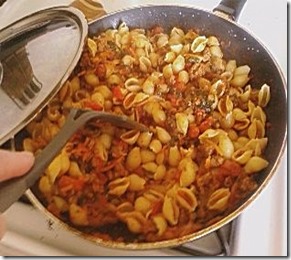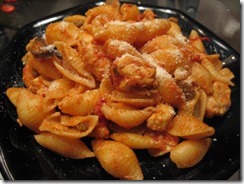Turns out your diet may be healthier than you think.
Those little extras you love like ketchup on burgers or hot sauce in tacos have hidden health benefits. New research shows that certain spices, herbs, and spreads not only boost flavor but can also help curb appetite, ease digestion, promote better memory, and even fight heart disease and cancer.
Here are 9 condiments to have on hand.
By Amanda Pressner
Prevention Magazine
Ketchup 
How It Works: Lycopene — a powerful antioxidant in ketchup — may slow the process that leads to atherosclerosis, says Betty Ishida, PhD, a USDA research biologist.
While all ketchup contains some lycopene, a study in the Journal of Agricultural and Food Chemistry found that organic versions contain up to 60% more per gram than conventional brands. The researchers also found that organic ketchup had the highest levels of vitamins A, C, and E.
Serving Tip: Use dark-hued ketchup for the most lycopene, and squirt on burgers and baked fries or stir with equal parts reduced-fat mayo for a Russian dressing, says Tanya Zuckerbrot, RD, a dietitian in New York City. Or mix with chopped garlic and herbs to marinate grilled chicken, suggests Daniel Stern, executive chef and co-owner of MidAtlantic and R2L restaurants in Philadelphia.
Buckwheat Honey 
- Daily Dose: 2-4 tablespoons
How It Works: Dark honey like buckwheat or blueberry contains the most antioxidants, say researchers at the University of Illinois Urbana-Champaign, who analyzed 19 varieties. Antioxidants protect cells from the damaging effects of free radicals and may reduce the risk of heart disease, cancer, cognitive decline, and macular degeneration.
Serving Tip: Honey has a strong flavor, so add in small doses to oatmeal, plain yogurt, and tea, and use instead of refined sugar, suggests Stern. Whisk it into homemade salad dressing for a touch of sweetness.
Rosemary
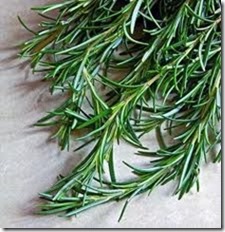
- Benefit: Eliminates foodborne carcinogens
- Daily Dose: 1-2 tablespoons
How It Works: Rosemary minimizes or eliminates carcinogens formed when cooking some foods, say scientists at Kansas State University, who found that seasoning beef with rosemary before grilling can reduce cancer-causing substances called heterocyclic amines by 30 to 100%. Danish scientists got similar results when adding rosemary to dough. Acrylamide, a potentially carcinogenic compound, forms in carb-rich foods when heated above 250°F.
"By incorporating 1 tablespoon of dried rosemary for each pound of f lour, we reduced acrylamide by more than 50%," says Leif Skibsted, PhD, a professor of food chemistry at the University of Copenhagen. He believes that the antioxidants in rosemary "scavenge" the harmful compounds.
Serving Tip: Add 1 to 2 tablespoons per 2 pounds of pork loin, steak, or lamb, or spread a paste of chopped rosemary, Dijon mustard, garlic, and coarse sea salt on meat before cooking, suggests Marc Meyer, executive chef at Cookshop, Five Points, and Hundred Acres restaurants in New York City. Stuff chicken or turkey with citrus fruit and rosemary sprigs, then roast.
Horseradish 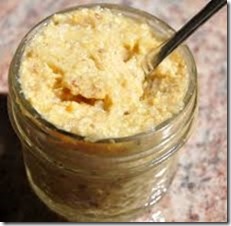
- Benefit: Detoxes your body
- Daily Dose: 1/4 teaspoon
How It Works: Glucosinolates, compounds in the roots and leaves of the horseradish plant, can increase your liver's ability to detoxify carcinogens and may suppress the growth of existing tumors, says a study in the Journal of Agricultural and Food Chemistry. Horseradish is one of nature's best sources of glucosinolates — it has up to 10 times more than broccoli, the next-best source.
Serving Tip: Mix into ketchup for a cocktail sauce or mustard for a sandwich spread, or add to yogurt to serve with lamb or fish, says Stern. Make a dip, adds Zuckerbrot: Combine 1 cup nonfat Greek yogurt, 1/2 cup chopped dill, 3 tablespoons bottled horseradish, and 1/2 teaspoon salt; enjoy with whole wheat pita chips.
Olive Oil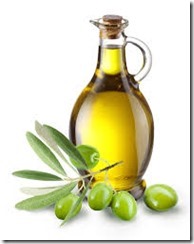
-
-
-
-
-
-
- Benefit: Boosts long-term memory
- Daily Dose: A few tablespoons
How It Works: Olive oil is a top source of oleic acid, an omega-9 fatty acid that is converted during digestion to oleoylethanolamide (OEA), a hormone that helps keep brain cells healthy. In a new study from the University of California, Irvine, rodents fed OEA were better able to remember how to perform two tasks than those that didn't eat it.
Researchers hypothesize that OEA signals the part of the brain responsible for turning short-term memories into long-term ones. "OEA seems to be part of the glue that makes memories stick," says Daniele Piomelli, PhD, a professor of pharmacology and biological chemistry at the university.
Serving Tip: Drizzle on roasted veggies or salad, or mix with crushed garlic and a pinch of salt and spread on toasted whole grain bread. Or blend equal parts olive oil, balsamic vinegar, and water with a squeeze of lemon and use as a dip for crisp veggies like radishes or cucumber.
Cinnamon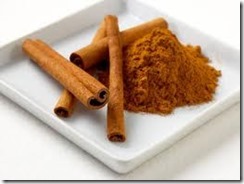
- Benefit: Stabilizes blood sugar levels
Daily Dose: 1 teaspoon How It Works: People who added cinnamon — one-half to a heaping teaspoon — to a sweet dish experienced a slower rise in blood sugar than those who didn't consume any, found a series of studies in the American Journal of Clinical Nutrition. The spice enhances insulin sensitivity, so it allows you to use more of the glucose in your blood, keeping blood sugar levels stable, says Joanna Hlebowicz, PhD, the studies' lead researcher and a fellow in cardiology at Lund University in Sweden.
Adding cinnamon to a carb-heavy or starchy dish may also help stabilize blood sugar after you eat, she adds. Keeping levels stable minimizes sugar highs and lows, and for those with diabetes, it could mean needing less insulin.
Serving Tip: Sprinkle on cake, cereal, or a latte. Work into starchy meals, like rice or grain dishes, by grinding together with cumin, coriander, and caraway and adding chopped nuts and dried fruit for a Mediterranean flavor, recommends Meyer.
Hot Sauce

- Benefit: Curbs appetite
- Daily Dose: A few dashes
How It Works: Eating just one meal that contains capsaicin — the compound that gives hot sauce and chile peppers their heat — not only reduces levels of hunger-causing ghrelin but also raises GLP-1, an appetite-suppressing hormone, says new research in the European Journal of Nutrition. Other scientists found that people who drank capsaicin-spiced tomato juice before each meal over 2 days ingested 16% fewer calories than those who drank it plain.
Serving Tip: Splash on tacos, brown rice, or low-fat tomato or lentil soup. Hot sauce also pairs well with citrus, adds Meyer. Top half a grapefruit with a few shakes, plus a teaspoon of brown sugar.
Sauerkraut 
- Benefit: Eases digestion
- Daily Dose: 1/2 cup
How It Works: Sauerkraut is full of probiotic bacteria such as Lactobacillus plantarum (L. plantarum) that can help relieve the gas, stomach distension, and discomfort associated with irritable bowl syndrome — and may improve the quality of life in up to 95% of those with IBS.
Serving Tip: Use fresh sauerkraut (it has more probiotic bacteria than jarred varieties) as a relish for grilled meats or lean turkey hot dogs. Or toss into a veggie and tofu stir-fry, says Andrea-Michelle Brekke, RD, a nutritionist in New York City.
Black Pepper 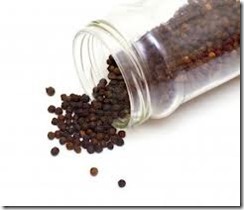
- Benefit: Guards against cancer
- Daily Dose: To taste
How It Works: Piperine, a compound in black pepper, may help interrupt the self-renewing process of cancer-initiating stem cells, according to new research from the University of Michigan. "By limiting the number of stem cells, you're limiting the number of cells with the potential to form tumors," says lead study author Madhuri Kakarala, MD, PhD, a clinical lecturer in internal medicine at the University of Michigan Medical School.
Serving Tip: Sprinkle on all your favorites; to up the heat and add texture, toast whole peppercorns before grinding, suggests Stern. Mix into plain yogurt and use as a topping on fresh fruit, he adds.
***Recently experts have recognized the health benefits of coconut byproducts. Some say that coconut cooking oil is better for us than olive oil. Also, coconut vinegar is being touted for its health benefits. Lastly, coconut sugar, which has many health benefits, is risk free for diabetics.
We all know there is a down side to having too much cane based sugar products, in our diet. However, there is no downside to using coconut sugar. Only upside, according to various experts. Television Dr. OZ did a segment on coconut sugar’s health benefits: http://www.doctoroz.com/videos/coconut-palm-sugar-best-new-sugar-alternative
Finally, there is a wonder fruit that most people outside of Asia, consider an ornamental house plant. Calamansi can make your house or apartment smell nice, but did you know that has numerous health benefits? Please check on my post on this amazing South East Asian fruit: http://johntsheehan.blogspot.com/2012/10/super-multipurpose-fruit-from_8968.html
You might be wondering how I know so much about exotic plants like coconuts and Calamansi?
I spent many years in the Western and South Pacific, plus the Far East. I am fluent in some of the languages. It’s a long story and we can save it for another time. My mother thought it was over the word Corps.
I was in the Marines and Peace Corps. I was also a freelance producer in The Far East.
My television career has been and still mostly is US Driven. However, these days I’m hanging my hat, while managing my US business, from Palawan in the Western Philippines.
The Philippines is not a technology laggard. Anything but.

- Technology allows me to operate just like I did, back in Dallas, Texas.
-
Palawan is a wonderful, beautiful place with no crime and the nicest people, maybe on Earth. I served in this country years ago, and always wanted to come back. Two and an half years ago, I did just that.
- I think very highly of the Filipino culture, lifestyle and people. You will not meet better people anywhere.

 That
That


That’s me above
- Please feel free to contact me if you have questions or would like to learn more about what I do.
- I do critiques and consulting ala carte or as a packaged deal.
- Part of what I do is help people think and manage the how's, who's, whys, plus what they do, for improving their careers. The where, is Where you want to see your career go.
Thanks for reading this and sincerely hope you find the information useful. There are also other articles on the Blog related to News Talent Career Management, including health and dietary information. There is an index, camera right, for your convenience.
There, you will also find articles on this Blog about the Television Business and current affairs in Asia, if that interests you.
John Sheehan
Millennium Media Entertainment
214-628-6236 (Routed also to The Philippines)
johntsheehanmme@gmail.com
Blog: http://johnsheehan17.blogspot.com/
Facebook: https://www.facebook.com/pages/Millennium-Media-Entertainment/74464753836
 Living out here on beautiful Palawan, The Last Frontier, I don’t have allot of time to cook...Yep--staying busy here in Paradise.
Living out here on beautiful Palawan, The Last Frontier, I don’t have allot of time to cook...Yep--staying busy here in Paradise. I adapted this cooking style used in Tonga and much of Polynesia. Tongans often cook Ha’ka Style---Meaning cooking by boiling in English but, it’s how they boil or actually braise their foods that is different. Coconut cream is used in cooking by both nationalities.
I adapted this cooking style used in Tonga and much of Polynesia. Tongans often cook Ha’ka Style---Meaning cooking by boiling in English but, it’s how they boil or actually braise their foods that is different. Coconut cream is used in cooking by both nationalities. Granted it's a Marine knife sharpening technique, which I learned in the Corps. It’s a fast, efficient knife sharpening methodology. I'm pretty sure my PSD thing is under control. So, I don't get why people look worried.
Granted it's a Marine knife sharpening technique, which I learned in the Corps. It’s a fast, efficient knife sharpening methodology. I'm pretty sure my PSD thing is under control. So, I don't get why people look worried. 
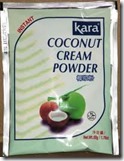 Add, a 200 ml packet of powdered coconut cream, (You can buy a can of it in the US--Just make sure it is coconut cream and not coconut water) basil, black pepper, oregano and a few chilies.
Add, a 200 ml packet of powdered coconut cream, (You can buy a can of it in the US--Just make sure it is coconut cream and not coconut water) basil, black pepper, oregano and a few chilies. 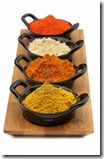 At this point you can add curry, or consider mushroom soup or just soy sauce. If you’re going to add soy sauce, wait until it's done and by now, it is. The coconut cream has thickened it and curry would have too. Another variation is coconut cream and just soy sauce. Again, your choice.
At this point you can add curry, or consider mushroom soup or just soy sauce. If you’re going to add soy sauce, wait until it's done and by now, it is. The coconut cream has thickened it and curry would have too. Another variation is coconut cream and just soy sauce. Again, your choice.